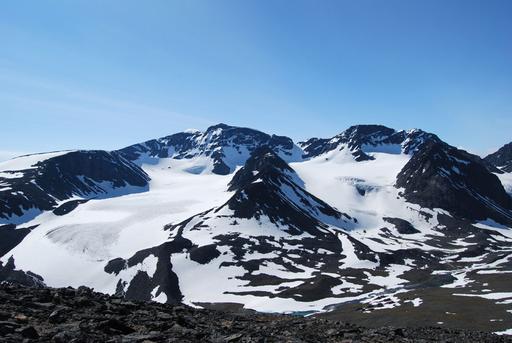Visa version
Visa
< föregående
|
nästa >
Jämför
< föregående
|
nästa >
Environment and Society in a Changing Arctic (AK1214)
Unique opportunity for students at KTH and UIUC to study the Arctic - Application Deadline 15 March 2018
This summer course focuses on the changes that take place in the Arctic region. These changes are partly triggered by climate change and its effects, and partly by global economic and political trends.
Retreating ice sheets and glaciers, decreasing sea ice, the changing seasonality of snow and ice, permafrost thaw and changing ecosystems all characterize the present Arctic. These developments, with large potential feedbacks, have led to increased efforts by scientists to monitor environmental changes, explain their causes and predict their consequences.
At the same time, changing global economic and political trends lead to a growing economic interest in the Arctic. The decreasing summertime sea ice cover in the Arctic Ocean offers new possibilities for shipping between the Atlantic and Pacific oceans along the northern coast lines of the Eurasian and North-American continents. Global economic processes such as rising and falling world market prices for base and rare metals result in boom and bust cycles in the prospecting and mineral extraction across the Arctic region.

Together these changes pose a challenge to all stakeholders in the region, from indigenous peoples and other local residents, municipal planners, to policy makers and economic actors on the regional, national and global scale. Not least, these rapid developments also challenge students who wish to work with questions of sustainable development in their careers.
The Arctic environment has always undergone change, however. The ways humans relate to and depend upon this region have always been dynamic.In order to understand the present developments and their possible outcomes, we need to know why and how the region has developed in a long term perspective. This course, jointly organized by KTH and Stockholm University, provides students with a deeper understanding of a fascinating and ever-changing region.
Organization and general outline
The objective of this course is to explore causes and consequences of the changes in the Arctic for society and the natural environment, and discuss possibilities to handle them in the future.
The course is divided into two parts. The first part takes place between June 4 - 21 at KTH in Stockholm and consists of a series of lectures, seminars and museum visits on the topic of Arctic environmental and societal change. In the second part,we conduct field work in Norrbotten – Sápmi (Arctic Sweden) between June 24 - July 4. The field work includes visits to some of the largest open-pit and deepest underground mines in Europe, Aitik and Kirunavaara. We will hike in one of the most beautiful mountain areas in Sweden, walk on Sweden’s largest glacier and stay at a research station, Tarfala, with a view over Sweden’s highest summit, Kebnekaise.
A more detailed course description can be found here.
How to apply:
Students need to fulfil the general entry requirements and 120 hp in one of the following fields: technology, natural science, architecture, history, environmental history, history of ideas, economic history, political science, anthropology, sociology, ethnology, literature, archaeology or human geography.
Students can apply via a separate form which can be downloaded here.
OBS: The number of places in this course is limited and the interest is very high, so please send an e-mail to changingarctic@abe.kth.se as soon as possible notifying your interest.
For more information about course content, e-mail:
or call Dag Avango at +46 733 788 579
Costs:
Most of the costs for the field work component will be covered, students need to cover the return flight tickets Stockholm - Kiruna (ca. 2000SEK/200 Euros).